
A paper presented by Brian Curtis, Associate Professor, University of Miami, Miami, Florida, February 14, 2007 at the F.A.T.E. Open Session (Foundations in Art Theory and Education) chaired by Scott Betz, Winston Salem State University, at the 95th Annual Meeting of CAA in NYC
I stand before you today in a role that some might characterize as that of a conservative curmudgeon. It is not a role I sought or even one that I would have imagined embracing but the career I embarked upon thirty years ago, that of a college level painting and drawing instructor, is currently being pushed toward extinction and I feel compelled to take a moment to address its endangered status.
I am an academic-leaning artist who was educated by modernists and who now finds himself teaching in a world that privileges contemporary anti-art practice. The pedagogical habitat that once supported the goal of fostering visual sensitivity, talent, craftsmanship, and creativity is fading rapidly from college level art school programs. This goal is being displaced - and increasingly replaced - by the de-skilling and dematerializing promotion of something called artist's attitude. Artist's attitude was described by Thierry de Duve in January of this year at the Claude and Alfred Mann symposium On the Future of Art School held at the University of Southern California, as a current day version of the critical attitude of early 20th Century.

However, as de Duve points out, what was once put forward as a heartfelt radical ideological alternative to both talent and creativity has now become simply a careerist attitude, a stance, a pose, a contrivance.
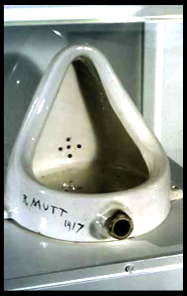
Considerable evidence including a letter from Duchamp himself to his sister in which he convincingly denied authorshiop of the sculpture now known as 'the Fountain" attests to the fact that this signature Dada sculpture that Duchamp later claimed as one of his is actually the work of a radical female Dadaist poet named Elsa Freytag von Loringhoven. Loringhoven is also now known to have created 'readymades' years before Duchamp did his.
When "attitude" is embraced as the criteria for aesthetic judgment over the subjective experience of visual quality and taste (connoisseurship) we are left with only a rational linguistic discourse that, according to Dutch designer, Jan Verwoert, another participant in the USC symposium, reveals the dark side of anti-art training based in "attitude:"
"What we see is the rise of a new culture of art project that is superficial in its content, and in its form deeply entangled in the power play of competitive curating "where the criteria for evaluating a work becomes a discourse of power rather than of taste."
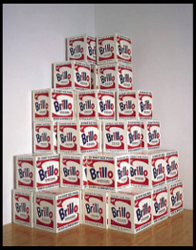
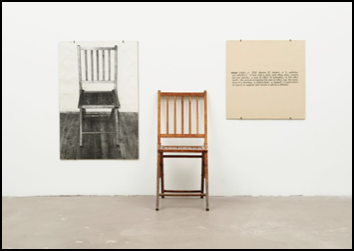
Andy Warhol's Brillo Boxes and Alan Kaprow's Chair
To foster this anti-artistic attitude fashionable "art" schools are indoctrinating students in programs of non-hierarchical, experimental, contextualized, interdisciplinary, integrative, theory dependent, multi-cultural, issue oriented, community sensitive, multivocal, technologically oriented, intermedia studies that sometimes include a visual component. And all this is being carried out, as you can see by glancing at the listing of this years CAA sessions (or next month's FATE conference), with a surprising lack of discussion among educators as to the wisdom of promoting "attitude." I am here today hoping, in some small way, to jump-start that discussion.
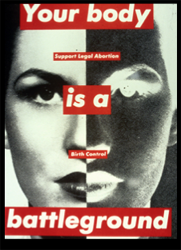
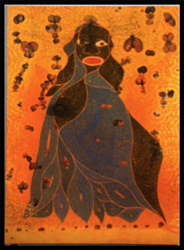
Were I to have the time I would certainly like my remarks to encompass the disruptive role the current "art" market has on the teaching of studio art production as well as the marginalizing influence exerted by higher education's privileging "research' and "information generation" as proof of excellence over traditional cultural modes of art expression but those topics will have to wait till another day. Today I will limit myself to looking into the political, philosophical, and technological character of contemporary cultural practices that are aggressively supplanting traditional visual sensitivity and hands-on studio training.
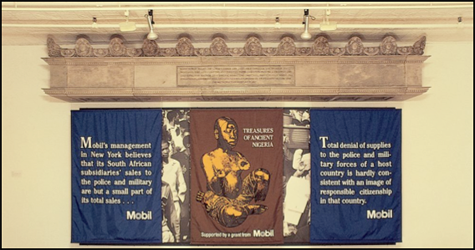
Hans Haacke's installation at the Metropolitan Museum challenging Mobil Oil Corporation of using
sponsorship of art exhibitions as a cover-up of socially abhorent support of reacist regimes
Curiously, the anti-cultural and de-civilizing influences in the radically politicized origins of contemporary anti-art practice are rarely a topic of discussion. As each year passes I become progressively puzzled by the homogeneous groupthink that dominates professional art organizations. The anti-enlightenment sentiments so popular in today's cultural practice can be easily and directly traced back to a variety of closely related sources: to the Dada movement that nonsensically dissolved itself in its founding anti-rational manifesto, to Duchamp's denouncement of craft and his assault on "good taste," to the Futurist manifesto's exaltation of the destruction of the existing order and its re-definition of beauty as political struggle, to Die Bruecke's anti-enlightenment fascination with primitivism, to the many purveyors of shock art from the 60's (i.e. the dada influenced Situationists International and the Up against the wall, Motherfuckers, an interventionist art group connected with the Weather Underground and SDS), fluxus, conceptualists, pop artists, performance artists, installation artists, video artists, punk rockers).
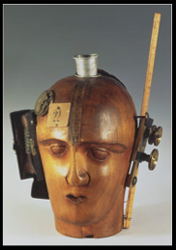
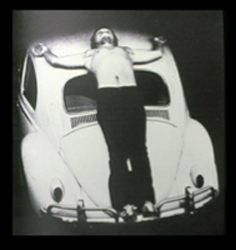
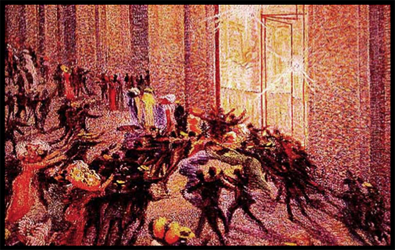
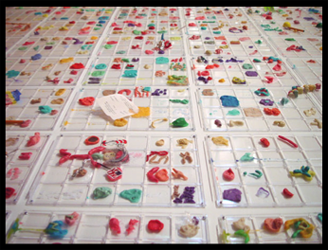
Each and every one of these cultural practice categories share in blatantly anarchistics sentiments that were given unequivocal voice in the 1969 counter cultural anthem We Can be Together by the Jefferson Airplane.
"In order to survive we steal, cheat, lie, forge, fuck, hide, and deal
We are obscene, lawless, hideous, dangerous, dirty, violent, and young
All your private property is
Target for your enemy
And your enemy is
We
We are forces of chaos and anarchy
Everything they say we are we are
Up against the wall
Up against the wall motherfuckers"
These lyrics contain undeniably de-civilizing sentiments that have pervaded the contemporary practice, artist statements, anti-art manifestos and art criticism for the last 35 years. The flavor of these lyrics lives on every time we see the adjective transgressive (to violate a law, command, moral code, etc.; to offend) used to dispense the highest praise to contemporary anti-art practice in the understanding that its value is determined by how blatantly a work violates middle class cultural boundaries. Such sentiments simplistically presuppose that the middle class is unredeemable, ignorant, selfish, complacent, bellicose, porcine, and deserving of every possible abuse.
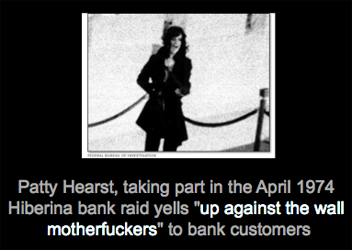
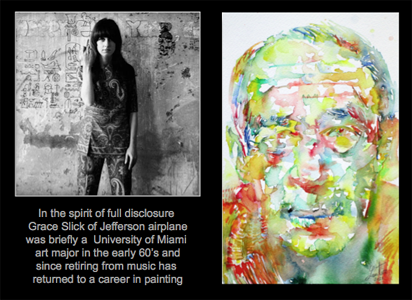
A Boston based art blogger/art reviewer, Franklin Einspruch, who also attended the University of Miami (MFA 1996), recently summed up the overarching shortcoming of this attitude rather succinctly when he wrote on ARTBLOG.net that "There's no cliche in art quite as popular as the cliche of challenging cherished cliches."
The anarchistic underpinnings of contemporary practice are, unfortunately, regularly reinforced by a bevy of radical postmodern theoretical perspectives that not only embrace the ephemerality, fragmentation, discontinuity, and chaos of modern life but actually seem to celebrate them as indicators of the failure of reason. From radical feminism, gay theory, multiculturalism, to pluralism, deconstruction, and Marxism we are told that reason is suspect and that there are no longer objective standards to judge anything by and that the notion of aesthetic quality and a singular best is nothing more than a discredited capitalistic white male European master narrative. In this postmodern model the trendy and the tasteless are always deemed better than work based in longstanding cultural tradition and the "rude boy" trumps the skilled hand and sensitive eye every time.
In addition to the underlying anarchistic bent of contemporary anti-art practice and the parallel cultural deconstruction promoted by postmodern theoretical perspectives I would like to address the destabilizing, de-civilizing influence of digital technology.
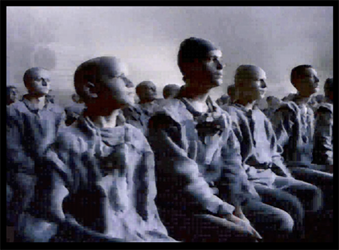
A still from Apple's video introducing the first MacIntosh computer -
"You will see why 1984 won't be like 1984"
The mechanical, impersonal nature of computers makes them the preferred weapon in the dematerializing of the art product and the deskilling of the art producer in what has now been a hundred-year war on traditional taste and media. The current pedagogical emphasis on digital media has been greatly amplified by postmodernism's inherent dehumanizing disdain for anything resembling traditional "high art" media.
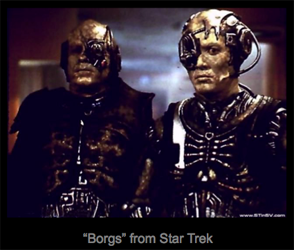
Computers are being promoted as being agents of individual empowerment, democracy, decentralization, and egalitarianism. Unfortunately, however, it is governments and large private corporations that are doing the promotion. That ought to tell us something. Did you know that Rupert Murdoch now owns MySpace? According to Neil Postman, a social theorist, the United States is dangerously close to a technopoly.
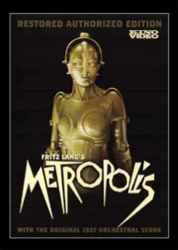
Technopoly is a cultural system in which technology is granted sovereignty over social institutions and national life. It places its faith in mechanical calculation rather than human judgment thereby depriving man of the common source of humanity and leaving him without moral foundation. According to Richard Sclove, rather than decentralizing political power, as promised, computers and the web are encouraging stateless megacorporations by enabling them to leap boundaries, to intimidate labor unions, elude domestic political opposition, threaten meddling government officials with plant closure and capital flight, and sidestep regulatory hurdles. This anti-democratic process has been termed Walmartization and its ultimate goal is a world wide corporately controlled monoculture.
On the educational level computers reinforce and compound unstructured thought processing and learning styles. Douglas Rushkoff, in his book Playing the Future, inadvertently admits that "screenagers" tend to discarded linear logic in favor of a spontaneous outlook that celebrates indeterminacy much the way channel/web surfing does and where CNN seems less real than Pulp Fiction. In the real word, however, without the ability to manipulate ideas systematically, "screenagers", when confronted with difficult challenges, are condemned to a life of rolling their eyes and muttering "Whatever!"
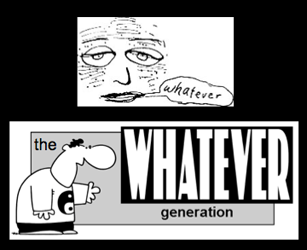
Both video and computers expose us to the tyranny of the disjointed moment and bind us to the demons of popular culture and dispirited materialism. Digital technology is a frighteningly efficient delivery mechanism for the various contemporary anarchical trends of contemporary practice I mentioned above. Attitude, anarchy, negation, and alienating technology all morphing into a Hydra of pedagogical disruption. Oh, my!

Despite the popularity of radical theoretical perspectives and the exalted status of digital technology, there are, fortunately, some among us who still look at these issues from a very different perspective. Ellen Dissanayake, in Homo Asetheticus, presents an intriguing Darwinist perspective on aesthetics that takes serious issue with the postmodernism position that denies the aesthetic part of human nature that has evolved to require beauty and meaning.
"Making special is a fundamental human proclivity or need. Aesthetics is not something added to us--- learned or acquired like speaking a second language or riding a horse --- but in large measure is the way we are. To make something special generally implies taking care and doing one's best so as to produce a result that is --- to a greater or lesser extent, ---- accessible, striking, resonant, and satisfying to those who take time to appreciate it. This is what we mean when we say that via art, experience is heightened, elevated, made more memorable and significant. "
In explaining the misguided direction of much contemporary anti-art production she goes on to say;
"Much of art today is like the display of a captive lone peacock vainly performed for human spectators, or the following by baby geese of a bicycle wheel instead of their mother. When an animal is removed from its natural milieu and deprived of the cues and circumstances to which it is designed by nature to respond it will behave as best it can but probably in errant ways or reference to aberrant cues and circumstances."
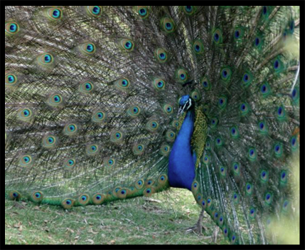
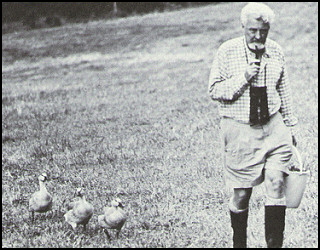
If Dissanayake is correct in identifying essential aesthetic needs, and I believe she is, then it is critical that we waste no time in restoring a sense of proportion to the intellectual, aesthetic, ethical, and spiritual character of art making and art education. I encourage this in the understanding that longstanding culture tradition, far from being the root of evil, is that which gives meaning to our lives. Theodore Dalrymple, in Our Culture, What's Left of It observes,
Art, in its highest expression, explains our existence to us, both particularities of the artist's own time and the universals of all human history. It transcends transience and therefore reconciles us to the most fundamental condition of our existence. In the history of art, unlike that of science, what comes after is not necessarily better than what came before.
In contrast to the contemporary fetish for novelty it is important to remember that sometimes the answers to tomorrow's questions can be found in the time-tested wisdom from the past. This is certainly true in art training. I am confident that there is no better course of study for helping to restore a sense of pedagogical proportion than that of visual sensitivity training through traditional hands-on studio practice.

